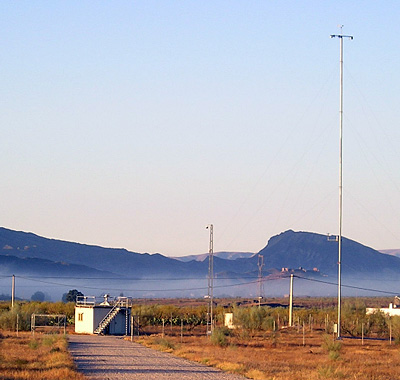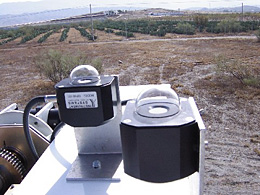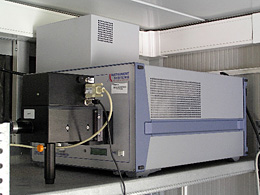

METAS
The PSA has had a meteorological station since 1988, primarily for measuring integral solar radiation (global, direct and diffuse radiation), but also for other generic weather variables (temperature, wind speed and direction, relative humidity and atmospheric pressure, cumulative precipitation, etc.). The task of entirely remodeling this old station has recently been undertaken. Given the framework in which our facilities work, from the beginning this initiative was intended to comply with the strictest requirements of quality and accuracy in solar radiation measurement. The configuration of the new station has been done following the guidelines of the World Meteorological Organization within the framework of the Baseline Surface Radiation Network.
In addition to measurement of the meteorological variables mentioned, its most outstanding feature is the measurement of the spectral distribution of solar radiation.

The new radiometric station’s equipment may be classified in three basic groups:
- Measurement instruments. The PSA meteorological station instruments are in the highest range of solar radiation measurement. All the radiation sensors are ventilated and heated, and have a temperature measurement sensor. This equipment provides the best information on solar radiation and more general atmospheric variables, and can be used for filtering input data and validating spectral models. They are used for:
- Measurement of the terrestrial radiation balance. Incoming and outgoing shortwave and long-wave radiation is measured at 30 m
- Solar radiation component characterization: (direct and diffuse) and UV
- Vertical wind profile: wind speed and direction at 2, 10 and 30 m
- Vertical temperature and humidity profile at 2 and 10 m
- Miscellaneous weather information: rain gauge, barometer and psychrometer
- The Spectroradiometer is so different that it must be considered an independent installation. It is a prototype developed to CIEMAT specificationsby Instrument Systems. This equipment, based on the SP320D, which incorporates a photomultiplier and a lead sulfur detector, records the spectral distribution of the solar radiation over its whole spectral range (from 200 to 2500 nm), compared to the majority of such equipment which works only for a part of the spectrum (generally visible or ultraviolet). The basic equipment is connected to a switch in such a way that it can work with three alternating probes, which are arranged in a solar tracker to record the global, direct and diffuse solar radiation, respectively. Although it is configurable, the equipment has been programmed to record a spectrum (with an approximate resolution of 2 nm in UV and visible and 10 nm in IR) in about 7 minutes, and changes measurement probes every 10 minutes. This way, there is an hourly database with 2 spectra for each one of the solar radiation variables. Another important difference from the usual solar radiation spectral distribution measurement equipment is that it operates continuously from sunup to sundown.
- The data acquisition system. The system was developed specifically for this purpose in Visual C++ using IMP cards. Acquisition frequency is 1 s with 1-minute, hour and daily averaging. The data are stored in a relational database management system, described below, and a series of physical and other filters are applied during acquisition. It is worth mentioning that this data acquisition system is connected to a GPS which also acts as a high-precision time server.

